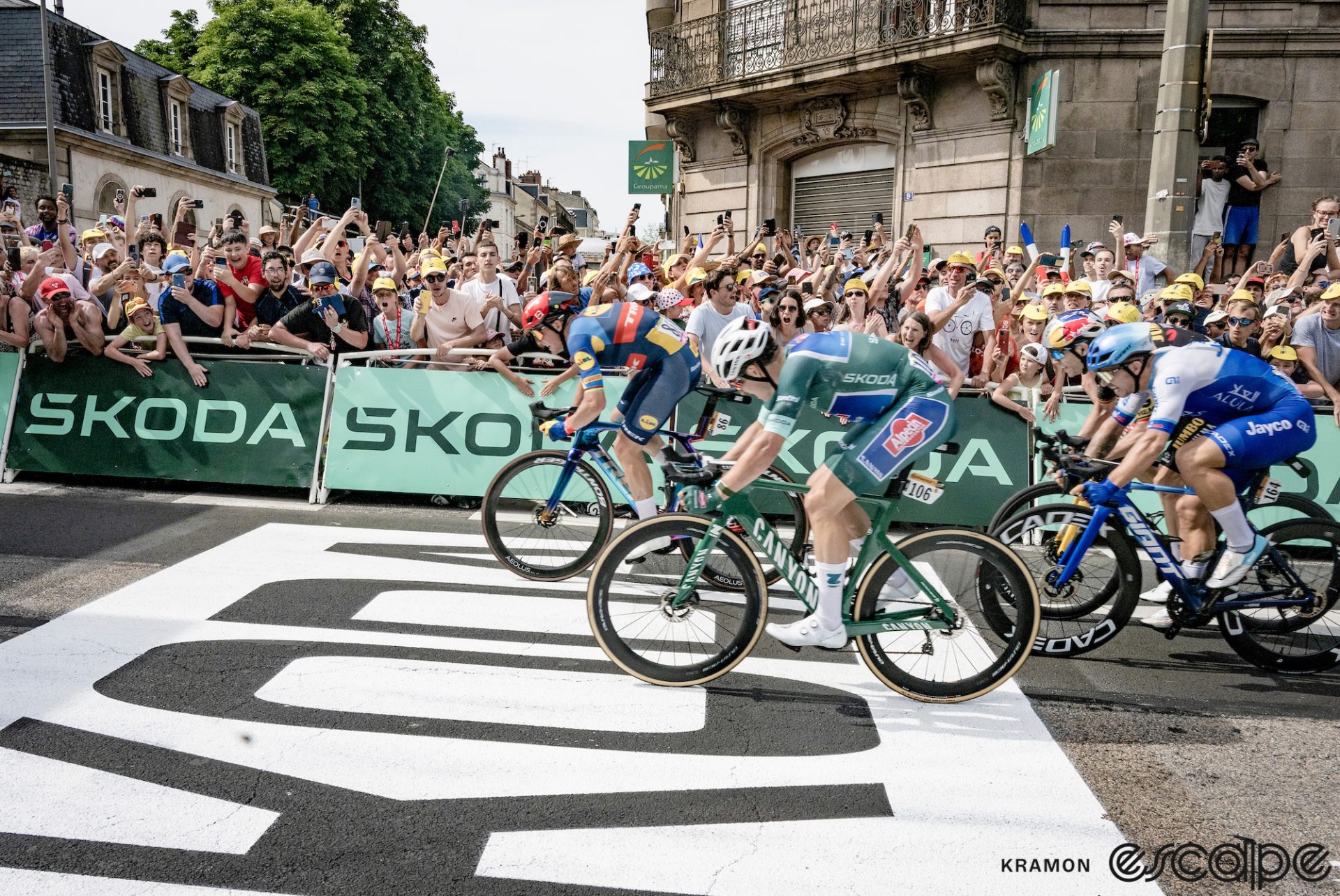With an eye toward bolstering safety within the pro peloton, the UCI has announced a bevy of new and updated regulations that include a yellow card system and the potential extension of the 3 km “sprint zone” to the final 5 km of a stage in a race. Select new rules will be used as soon as the Tour de France later this month.
The new rules were agreed to at a meeting of the UCI Management Committee that took place from June 10 to 12 at the UCI headquarters in Aigle, Switzerland, and the changes are part of the governing body’s SafeR program, created last June to improve safety with input from riders, teams, and race organizers.
The most notable is a brand new yellow card system, which will be put into effect on a trial basis starting on August 1, with the trial set to run through December 31. Under the new rules, race commissaires “will be able to issue these yellow cards for any offence likely to pose a risk to the safety of the competition.” The “cards” themselves are virtual, so don’t expect to see a commissaire on a moto raising one in the air after an incident. Also, during the trial period, no penalties will be assessed.
Starting January 1 of 2025, however, sanctions will be levied on those receiving multiple yellow cards within a specified period. Those who receive two yellow cards in a single race will be disqualified from that race and suspended for seven days. Three yellow cards in a 30-day period will lead to a 14-day suspension, and six yellow cards within a single one-year period will lead to a 30-day suspension.
Another major highlight of the newly announced updates is a change to the rule that currently designates the final 3 km of a stage with an expected bunch finish as a safe zone where riders who lose touch with the bunch due to punctures or crashes still receive the same GC time as the group they were with at the time of the incident. Under the new rules, race organizers will be given the ability to apply for the extension of that “sprint zone” to the final 5 km of a stage.
In a related move, the UCI will also adjust how time gaps are calculated in bunch finishes. In the existing system, riders must keep a gap of no more than one second between them and the rider immediately ahead of them to be credited with the same finish time. If they don’t, the time gap is calculated to the first rider in the group in front; in the case of a smaller group trailing behind a large one, that could be far more than one second. At a race organizer’s request, that gap could be extended to three seconds for riders in the main peloton.
The UCI proposes to expand it to all groups on the road with the exception of clearly established breakaways. Both the extended safe zone and more generous time gap rules will be tested “during certain stages of the next Tour de France with an expected sprint finish,” the UCI said, although no exact details were available on which stages.
Other vetted updates include a possible change to rules around race radios, with the UCI set to test the idea of restricting their use to fewer riders.
“SafeR has provided a platform for me to address the riders’ number one concern: safety in races. Feedback has shown that the majority of riders wanted the 3 km rule extended to reduce stress during hectic race finales. I am thrilled that this will be tested at some sprint finals at the Tour de France, and I thank the UCI and ASO for allowing it,” said Adam Hansen, the current president of the CPA riders’ union.
“Additionally, a large survey conducted last year indicated the need for a yellow card system in cycling, which will be tested in the coming months before being implemented next year. These initial measures recommended by SafeR to the UCI demonstrate that riders’ requests are being heard and acted upon. It is crucial, and we are making significant progress in this area. There is still much work to be done, and I look forward to continuing the solid work that has begun.”
Did we do a good job with this story?

